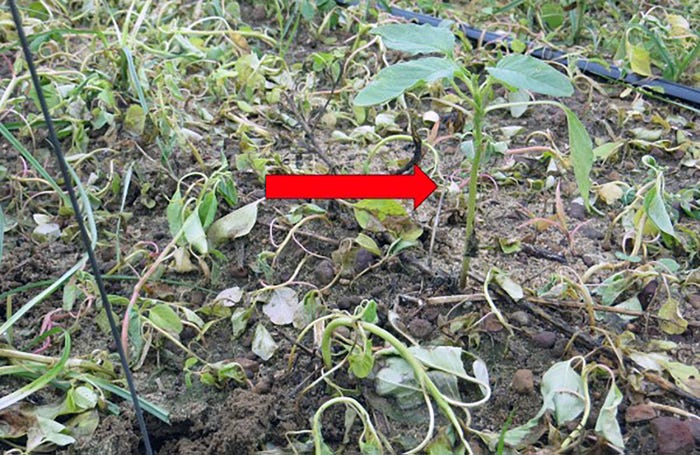
The plants in the greenhouse looked a little beat up but remained rigidly upright, almost boastful. That was a problem, but not too surprising. The pigweeds showed their natural agility.
Stanley Culpepper, University of Georgia Extension weed specialist, says scientific evidence collected this year and last confirms Georgia now has a concerning population of pigweed resistant to PPO-inhibitor Group 14 herbicides. PPO-resistance has been confirmed in other Southern states.
The plants in the greenhouse were part of a test Culpepper’s graduate student, Taylor Randell, conducted. Seven days prior, one set of plants, which were emerged at the time, was hit with a 125-ounce rate of Cobra with a crop oil concentrate. Another set, again already emerged, received a 240-ounce rate of Blazer with a nonionic surfactant. Another set got a 240-ounce rate of Reflex with a nonionic surfactant. Though stunted compared to the check plants, the tested plants looked OK and ready to continue growth.
Pre-emergence, residual herbicides -- including PPO products -- remain the best frontline defense if activated timely for a sound management program, he said, but the greenhouse study throws caution flags.
"If we get tolerance, or lose PPOs with our residuals, we will be in big trouble. That is not a place we want to be," he said.
Research to determine how the pigweed in the greenhouse will respond to residual PPO activity began in November, he said.
Labels Back
With an EPA decision in October, cotton and soybeans growers again have access to use in-season dicamba technologies through 2025. Regulatory access to the technology again is a good thing, he said. Without continued sound weed management decisions, however, the technologies could play out before the labels expire or a court ruling stops them again.
The pigweed has proven again and again its naturally built to outmaneuver herbicides. One pigweed female competing with cotton for the entire season can produce 250 grams of seed, ready to be picked up and blown to the wind. Through natural selection, what if that one female is resistant to dicamba or 2,4-D? Pigweed resistance to dicamba and 2,4-D has been confirmed in Kansas, he said.
Culpepper has a picture he uses to make a point in some Extension presentations. It shows a spot in a field where emerged pigweeds were hit with Roundup plus dicamba. The pigweeds lay dead. But one stands firm, rigidly upright, almost boastful. That picture, he says, says it all.

The lone pigweed survives application of Roundup and dicamba in a Georgia field. (University of Georgia Extension)
Numbers Game
It's a numbers game, and the numbers are in the pigweed’s favor. Studies in Georgia and Tennessee confirm residuals at planting when activated can provide almost 98% control of season-long pigweed management. That's impressive but that 2% of escapes can total as many as 19,000 pigweed plants per acre that a post application must eliminate, or “pigweed can still eat your lunch,” he said.
Cover crops can further reduce the number of pigweed plants a post application must eliminate. A cover biomass of 4,500 pounds per acre works well but 7,000 pounds per acre works even better to suppress pigweed emergence.
Cotton growers know the mantra, he said, but it is always worth repeating:
Pigweed-free at planting
Residuals at planting with two effective active ingredients.
Sequential post-emergence application.
Layby with directed or hooded application.
Remove escapes.
The game against herbicide resistance is not going to get easier. Growers carry much of the burden against weed resistance and have done an exceptional job over a relatively short period of time to regain solid ground against pigweed. But resistance is an industry-wide issue. Crop protectant companies, academia and growers, along with science-strong regulatory policy decisions, will need to coordinate resources and information to stay ahead.
About the Author(s)
You May Also Like






